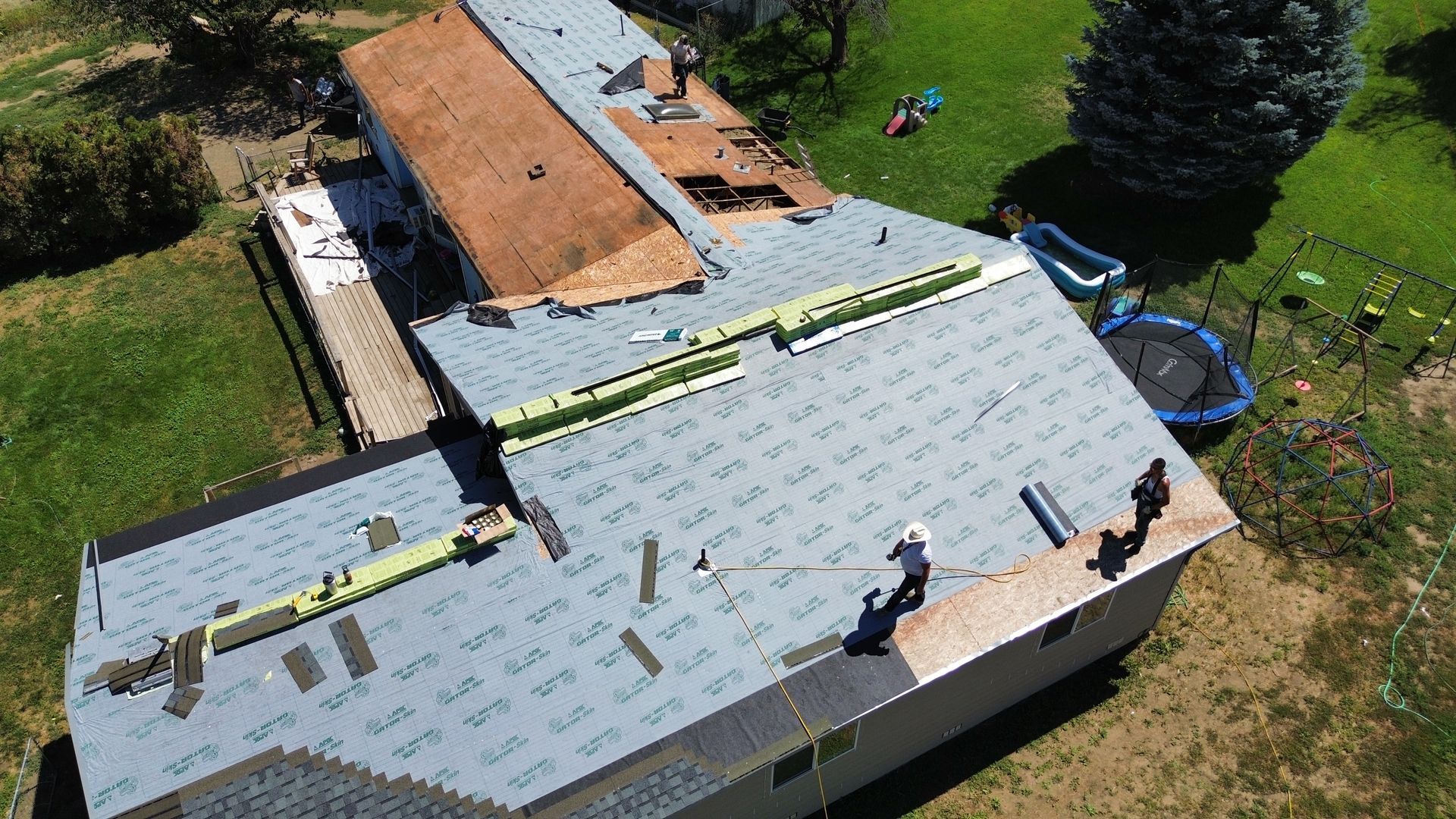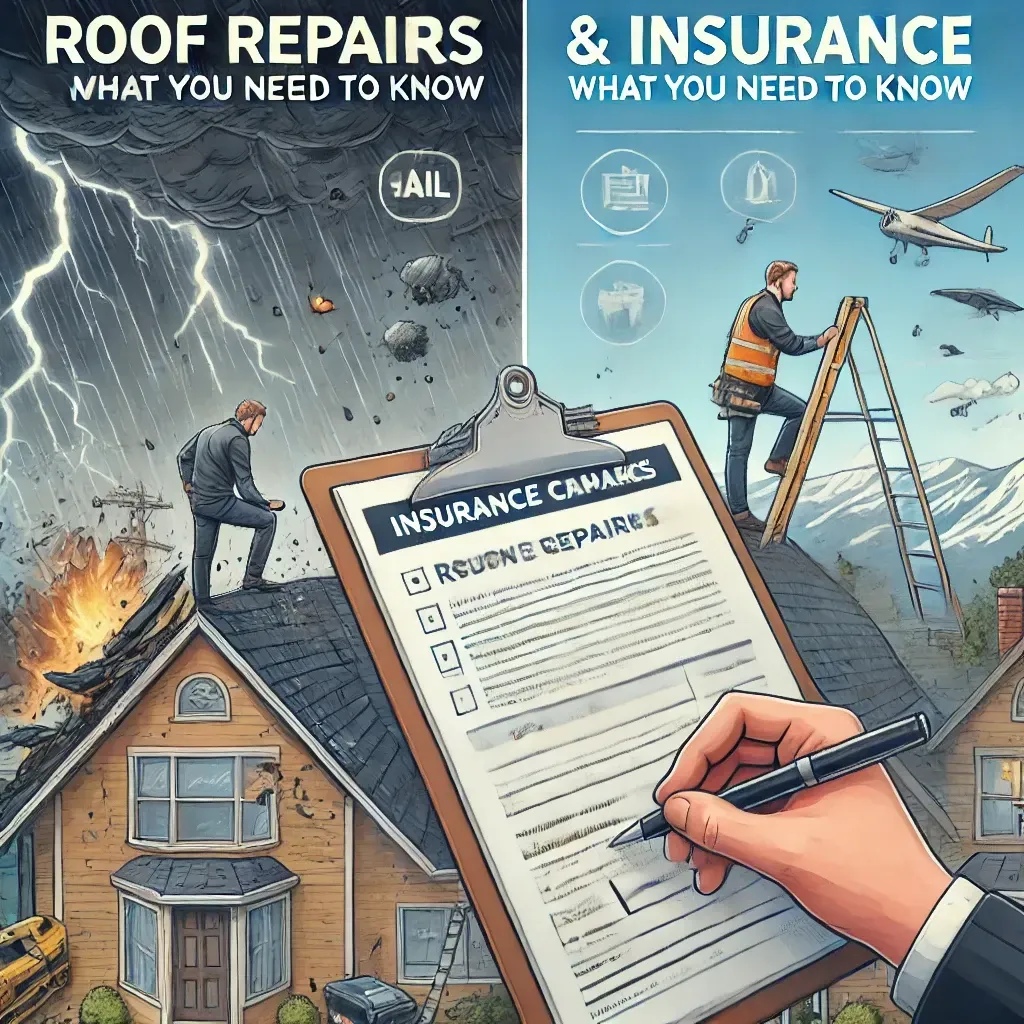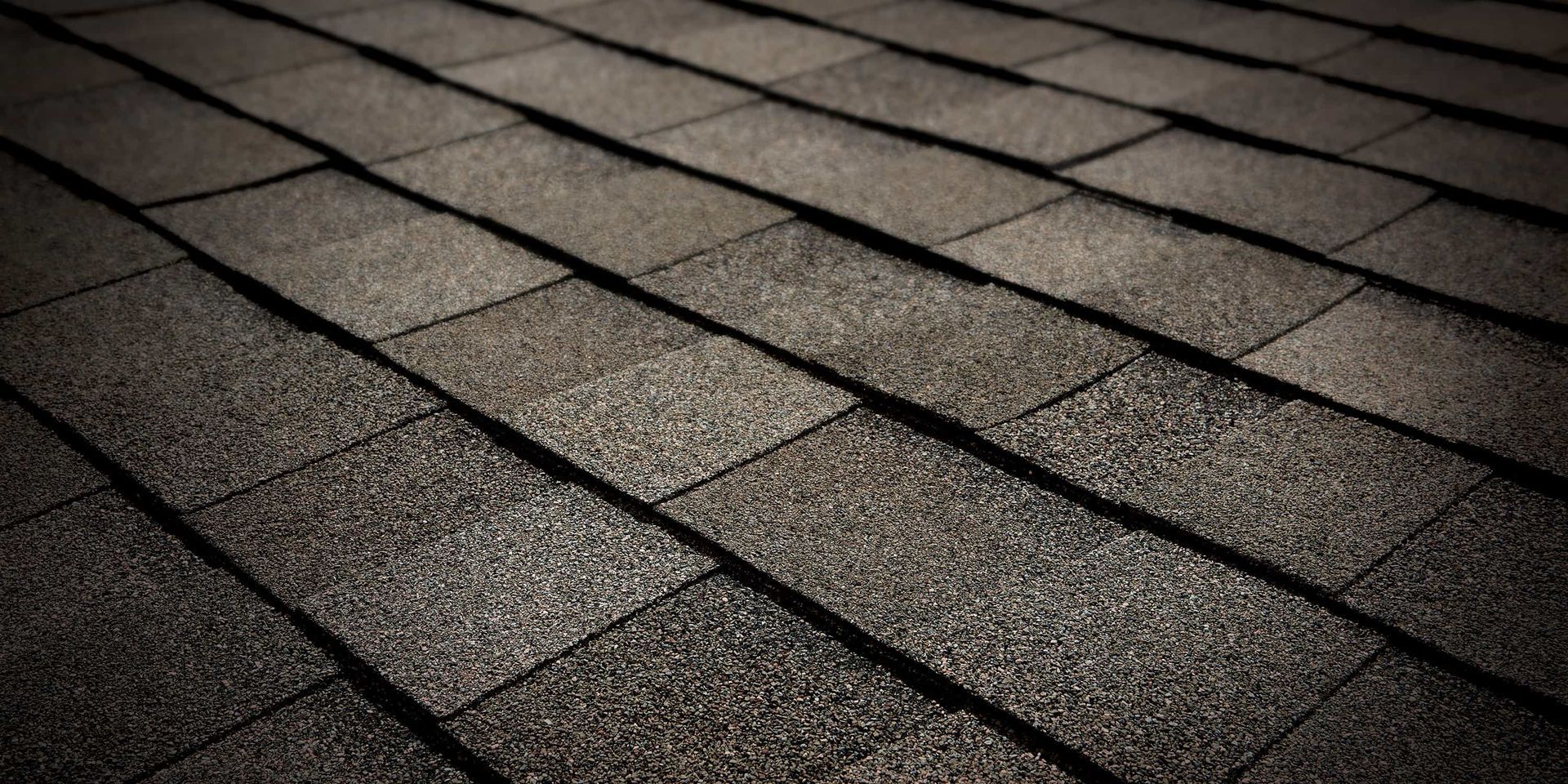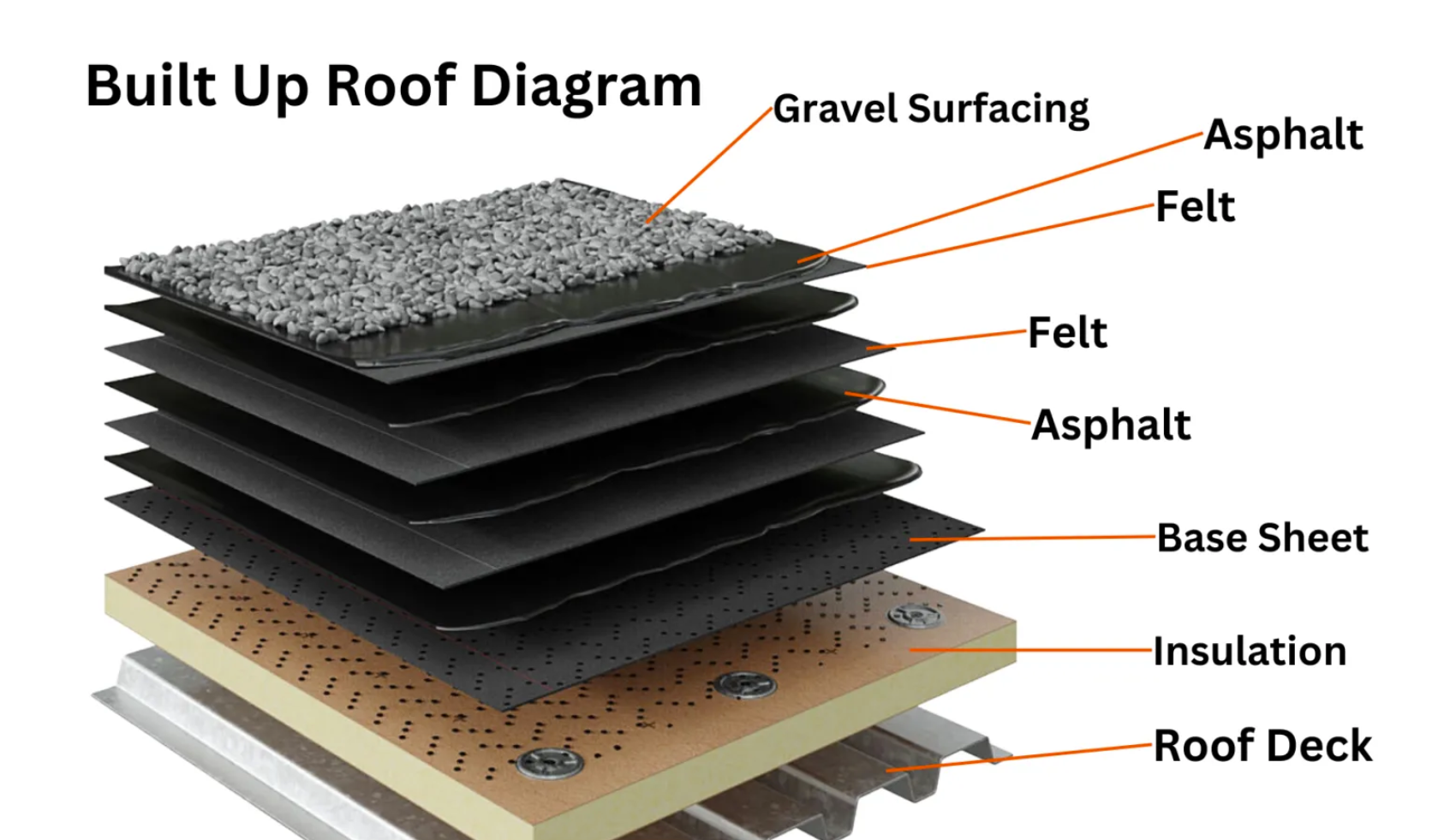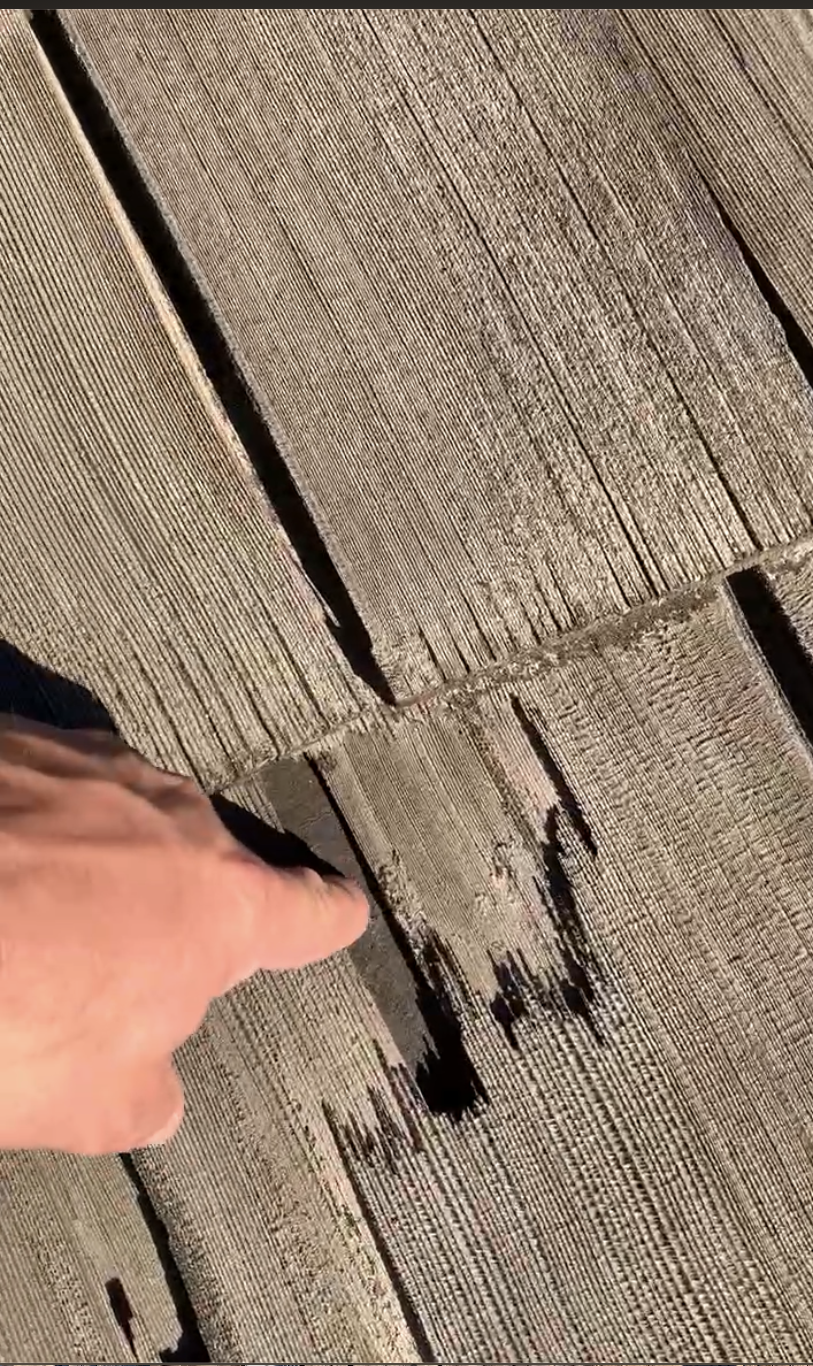Ice Guard
Ice guard also known as Ice and water shield. This product is made from polymer-modified bitumen. It is produced in 3' wide rolls and depending on the manufacture and function will very in length. Ice Guard has a sticky back side covered by a protective cellophane that must be stripped off before applying the product.
Ice Guard is applied to the wood substrate along the eaves of the roof. It can be applied to gables, valleys, around skylights and chimneys. Where ever it is installed the key for it to work as designed is to adhere it to the wood roof surface of the house.
What is the purpose of Ice guard?
In the photo below we see that the hot air in the attic melts the snow on the roof surface. The snowmelt runs down to the eave and passes beyond the building walls. Once the snowmelt has gone past the building line it begins to re-freeze causing an Ice Dam. As the ice dam forms it will continue to grow as more ice melt hits the dam and freezes. Soon it will grow under the shingles of your roof and cause a leak.
More attic insulation can help reduce the heat in the attic by preventing the heat in your living space from entering the attic.
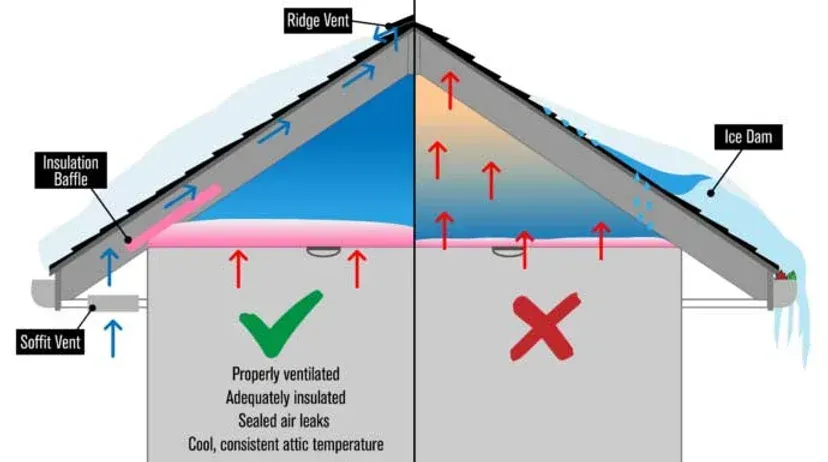
Gutters that are not cleaned cannot evacuate enough snow melt and quickly freezes and becomes a giant ice dam.
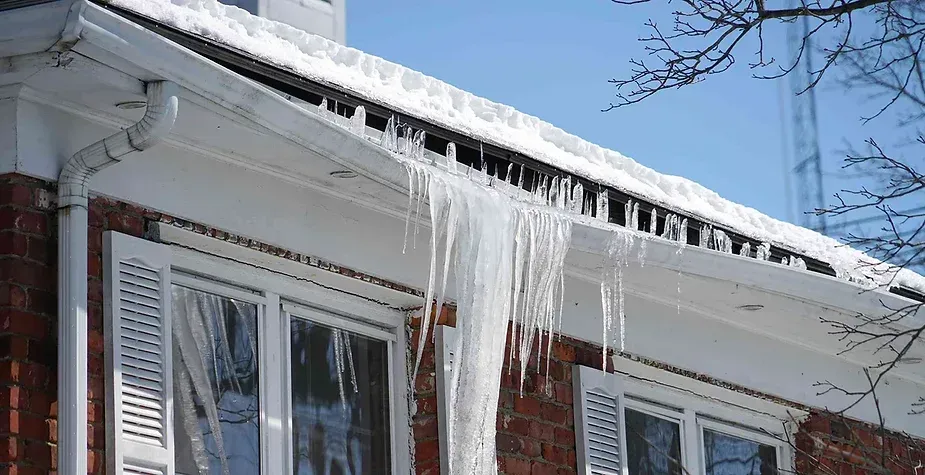
Below you can see as the Ice dam grows it crawls up and under the roof system. When the temperatures rises enough to melt the snow and ice it will melt under the roof system and infiltrate your home.
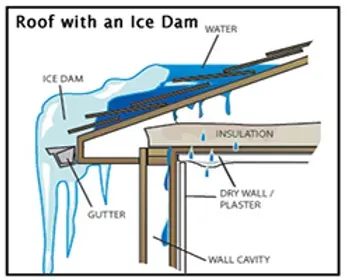
Ice guard adheres to the wood substrate. Your new roof is installed over the ice guard. When the nails that are used to install your shingles puncture through the ice guard, it seals the nail like a gasket. Now when an ice dam forms and ice crawls under your roof system, the ice will sit on top of the ice guard. If your ice dam started in the gutter and crawled under the first shingle it won't be able to crawl under the ice guard since it's adhered to the wood substrate, so it crawls over the ice guard. Now when it melts when the temperature rises it will melt safely on the top of the ice guard and simply flow out.
Building codes may require that ice guard be installed 2 feet beyond the building line for maximum protection. As of now no building codes or manufactures have details or instructions on what to do if Pipe flashings, or skylights are within the ice guard zone at the eaves.
At Yakima Roofing & Remodeling we go beyond the manufactures specs and local building codes by sealing pipes to the ice guard. This isn't a practice by any other contractors and may never become standard practice, but we believe in going the extra mile for our customers, even if they don't know they are getting the extra protection at no extra cost. Now if an ice dam does form and crawl up around a pipe it won't be able to infiltrate around the pipe flashings.
Installing a new roof over an old roof
A common practice by many roofers is to install a new roof over an existing. We will cover why this is not a good idea in another post but when it comes down to ice guard we have one reason why this isn't a good idea.
When Ice guard is installed over the old shingles it cannot adhere to the wood substrate. Ice dams can continue to crawl under the old shingles and infiltrate into the home.
Either the first roof along the eaves should be removed so that the ice guard can adhere to the wood or your just wasting your money. The Yakima Local Building Codes Department couldn't answer a simple question when asked.
Do you install ice guard over an existing roof? They want ice guard installed but to do so over an existing roof voids the design of the product. They may opt for you to install it even if it doesn't work as designed but I can assure you, if the product isn't adhered to the wood substrate it will not work as designed.
We have also discovered that not all ice guards are created equal. Some products do not adhere very well or at all even if left sitting for days in the blistering Yakima Sun. This means that an ice dam will be able to crawl under the ice guard and render it a costly waste of money because it won't function as designed.
There are two different types of Ice guard. One is designed for most roof systems while High Temp is designed for metal roofs. The composition is designed in such a way that a hot metal roof will not cause the ice guard to break down from heat and rapid expansion and contraction.
One major issue with ice guard is that when it comes time to re-roof your home the ice guard doesn't like to let go of the old roofing shingles. This could mean that you would have to replace the substrate along the eaves and any other location you placed the ice guard. This is very costly! So now that all of the old roof substrate that had ice guard and shingles adhered to it is removed, your roofer will install new ice guard to the new substrate and install your new shingles. You shouldn't have to deal with this issue again for at least 30 years right? Not if your roof is installed correctly.
Yakima Roofing & Remodeling, LLC is always looking out for you and your future investments by trying to remove future costs! If we have to replace the substrate from your old roof and install new or if we are installing ice guard over a roof that has never had Ice guard installed we will install our synthetic underlayment's over the ice guard to create a barrier between the ice guard and shingles. Because this isn't a manufacture or building code requirement it isn't a practice that any other roofing contractors employee!
When it comes time to remove the roof system we installed for you, you won't have the added costs of removing substrate! These are just a few ways Yakima Roofing & Remodeling, LLC is looking out for our customers.
